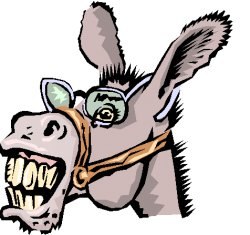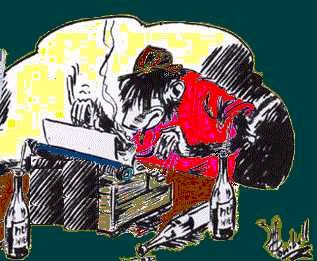Jack, my Ass
A little more than a decade ago, there was a talk show on South African TV, named after the two producers, Jan Spies and P.G. du Plessis. The show became famous by inviting a variety of unknown but often colorful characters to recount folklore and other stories from long, long ago.
One of these unlikely storytellers was an older gentleman, uncle Lourens Erasmus. Now obviously, here was a man with deep insights into the psyche of the donkey. For many years this was his only form of transportation and it was clear that he was intensely familiar with the topic. He even intended writing a book on the subject.
One day, on the way home from school…the African sun was hot, and both the rider and the donkey were tired and half-asleep…suddenly a pheasant took off from a raisin bush right next to them.
For those of you that know your pheasant, you will recall what an unearthly sound it makes when it takes off. Needless to say, by the time he woke up, the donkey was gone! He was still stretching out his arms to grab the animal by the neck, but was too late. (Actually, he reckoned he came a lot closer to catching the pheasant than to grabbing a hold of the donkey.)
The terrain was rocky and he came down hard. As he sat there, tending his wounds, he decided that he was going to kill himself an ass. That very day, still. In his fury, he wanted the biblical pleasure of formally stoning the animal to death.
At first he tried by throwing rocks at it, but all to no avail. Every time a stone would leave his hand, the donkey would move its head, and he would miss. A while later, after his efforts had removed most of the bark from the nearby trees, he realized that this plan would never work.
So he decided upon a different tactic. He proceeded to cut himself a nice knobkerrie* from a nearby tree, and he made an effort to befriend the animal. Soon he remounted the donkey and was on his way home again. He intended to wait until the donkey was asleep, then he would hit it with the stick just behind the ear, and finish the job once and for all.
As predicted, a few hundred yards further down the road the donkey was walking in its sleep. Slowly he reached behind his back, got a good grip on the club, and then brought it down with a sharp and decisive action; swinging the club over his head and carving it down towards the skull of the donkey.
What he did not know at the time was that a donkey could see though its ears. As he was aiming for the final deathblow and the kerrie was accelerating down its trajectory, the donkey spied his movement - and moved its head ever so slightly out of the way. As a result, the club missed its target and connected with his kneecap. That's when his lights went out.
According to uncle Lourens, it was through bitter personal experiences like this that he came to understand that the donkey was man’s superior. Trying to tame it was a futile affair: If you tried to lift its hoof, it would step on your foot. If you tried to harness it, you had to stop with the precision of an engineer - if you overshot the mark by two inches you had to lead the donkey around and repeat your whole approach, or you had to drag the wagon closer. No way you could get him to back up.
----------------
.
.





No comments:
Post a Comment